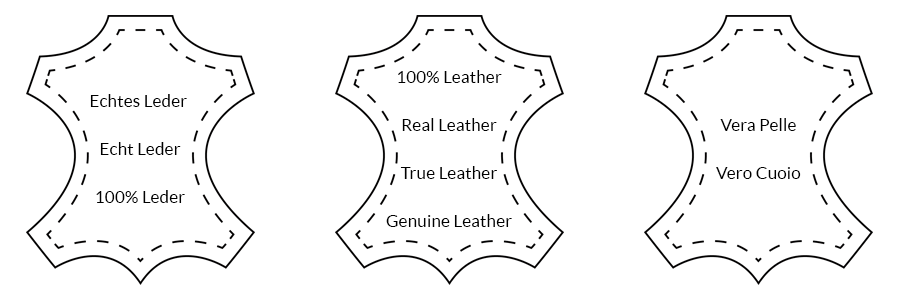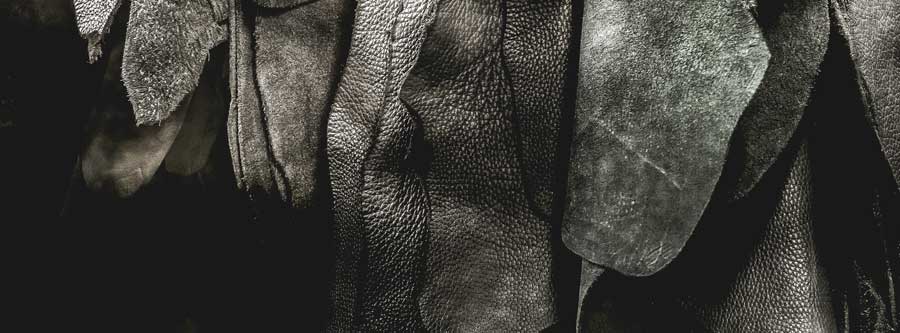ALL YOU NEED TO KNOW ABOUT "GENUINE LEATHER"
It is probably one of the most common yet deceiving terms in the otherwise highly-regulated fashion world. Almost any leather piece contains some kind of description; most often “genuine leather”. If you are like most consumers you are not too familiar with the established fashion jargon, especially if you are not a native English speaker. So, when you read the words “genuine leather” you will probably get a warm and fuzzy feeling inside and generally feel good about the quality of the leather product of your desire. Yet, sometimes this good feeling might be misplaced.

Perception vs. Reality
The fashion industry managed to establish a term whose meaning is somewhat difficult to grasp. According to the dictionary, the word “genuine” can have many meanings such as authentic, real, true, or actual. In other words, much more straightforward synonyms to the term “Genuine Leather” would be “True Leather”, “Real Leather”, or “100% Leather”. In short, genuine only means that something is actually made of leather but does not infer high quality.
In our article Leather 101 we shed some light on the different leather grades: full-grain, top-grain, split, and bonded leathers. Even though the grades are quite different in terms of durability, quality, and price, all of the first three leather grades are technically genuine leathers, i.e. they are of real leathers. In case you already did some research about “Genuine Leather”, you have most likely come across sites that describe “Genuine Leather” as the worst leather grade. That is simply incorrect. These sites confuse “Genuine Leather” to be the same as split leather which is an actual leather grade and, indeed, the worst kind of leather quality. Always remember that “Genuine Leather” is not a qualitative term but only a collective term to categorize products which are made of real leather; just like the term “car”. A Ferrari and a VW are not comparable quality-wise. Nevertheless, they are both cars. It’s the same for leathers. Hence, it is also possible that brands label their products as made of “Genuine Leather” even though they are made of premium full-grain leather. Sometimes people also wonder if “Genuine Leather” comes from a certain animal. The obvious answer is “No”. As mentioned above, “Genuine Leather” only means real leather regardless whether it comes from cows, sheep, lamp etc. It is also important to note that “Genuine Leather” does not reveal any information about the animal housing or food quality and the tanning process of the leather.
Contrary to full-grain, top-grain, and split leather, bonded leather is only partially made of leather and consequentially does not fall in the genuine leather category. Another kind of leather which must not be categorised as genuine leather is faux leather, which can either be produced artificially or organically (e.g. made of pineapples or mushrooms). This distinction is not only important in order to assess if a product is priced appropriately but also in order to protect customers who pursue a vegan lifestyle from accidentally purchasing a product made of real leather. The labelling of genuine leather in the form of an animal hide symbol including some additional designation has become the standard. It is often stamped on the lining leather of belts or is shown on informative product labels.

Room for Deception
Where it gets a bit sinister is that fashion brands know that many customers are unfamiliar with the term “Genuine Leather” and its actual meaning and they use that to their advantage. Even more expensive brands sometimes use the much cheaper split leathers, label their products as “Genuine Leather”, and sell them for a lot of money. Trusting the good reputation of these brands, the customers assume high quality and might end up being sorely disappointed.
Where it gets even more problematic is when it comes to the other meanings of the word “genuine”: original, unfeigned or unadulterated. The only leather grade which could live up to such strict standards are full-grain aniline leathers. Any other kind of leather is processed to varying degrees: Semi-aniline leathers are treated with a slight protective coating which might contain additional pigmentation and Nubuck or Suede leathers are sanded and buffed to create its signature velvety surface texture. Whereas these alterations might be discounted as minor modifications, split or corrected leathers undergro much heavier treatment. They can be worked with polyurethane (PU) coating, artificial grain embossing, or spray-paint to create various leather optics. Yet, that does not mean that split leathers are inherently bad leathers, as split leathers like the famous Saffiano or Palmellato leather optic are beautiful leathers. Yet, we do not believe that even these leathers should be categorized as unfeigned. Therefore, we try to refrain from using the word “Genuine Leather” as much as possible and indicate the exact leather grade or leather optic instead.

What Now?
Always keep in mind that “genuine leather” is a descriptive term and not a qualitative one. Not every genuine leather is the same and it might be beneficial to dig a little deeper before finalizing a purchasing decision. Many of the corrected leathers look very similar to grain leathers and there are only two ways to know what the product of your interest is actually made off: Cut the leather open or ask a sales rep ... you should probably stick to the second option. This might seem a bit tedious but it will be worth it and long-lasting joy with the leather product of your choice will be the reward.